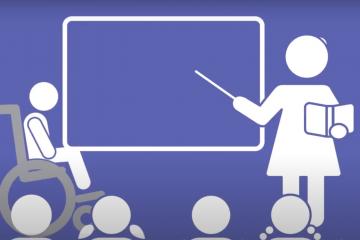People with Disabilities Also Have Diverse Sexualities and Gender Identities
A year ago, I wrote in my Forbes column about the decades-long pattern of Pride Month celebrations excluding people with disabilities. The underlying reason why Pride events were (and still are) mostly inaccessible for people with disabilities, both in terms of physical spaces and social acceptance, is that mainstream media and public don’t see them having identities outside of their disabilities. While most of this year’s Pride events have either been canceled or moved online due to COVID-19, we still must recognize and amplify people with disabilities within the LGBTQ+ community.
Sexuality and disability are individually difficult topics and often considered as taboo. Those concepts combined, it is almost an impossible thing to talk about in a mainstream setting. Usually, the “disability community” is characterized as a whole, despite the existence of a broad spectrum of abilities and disabilities. People with disabilities have many other social identities independent from their disability, including sexuality and gender identity. But this gets lost in translation when expressed to the public. Too often, this narrow way of viewing disabilities has grave consequences, such as equal access to reproductive health care. The Cerebral Palsy Foundation is currently revolutionizing healthcare for women with disabilities through our Women’s Health Initiative. A shocking 80% of US doctors graduate medical school without ever having treated women with disabilities, let alone LGBTQ+ people with disabilities, especially trans people with disabilities. There needs to be much more work in creating a more inclusive healthcare system for all people with disabilities, regardless of their sexual orientation or gender expression.
On a societal level, people must re-engineer their perceptions of what types of people are deserving or capable of having different gender expressions than their biological sex and exploring their sexualities. As contemporary disability studies scholars call it, Crip theory recognizes the intersectionality of one’s disability identity with all other identity variables. Robert McRuer published Crip Theory: Cultural Signs of Queerness and Disability in 2006, the first known book that analyzes how the fields of disability studies and gender & sexuality studies intertwine. Although McRuer’s book focuses on queerness, it adapts theories from feminism and African American and Latinx studies to explain the multiple facets there is to the identity of a person with a disability. Furthermore, Crip theory acknowledges the historical exclusion of diverse groups within the disability community as a consequence of internalized oppression within said community.
Recent studies show that LGBTQ+ identifying people are more likely to have a disability than the general population. For example, as shown in this infographic, 40% of bisexual men, 36% of lesbian, and 36% of bisexual women live with disabilities. With a significant portion of the LGBTQ+ community having disabilities, we cannot afford to ignore this considerable intersectionality.
Eli Clare, a genderqueer person with cerebral palsy, is well known within the Crip theory and queer theory studies. Clare lectures all over the United States and Canada at conferences, college campuses, and community events about disability, queer and trans identities, and social justice. In 2002, Clare helped organize the first-ever Queerness and Disability Conference, wherein this keynote speech he said:
“We need more exploration of gender identity and disability. How do the two inform each other? I can feel the sparks fly as disabled trans people are just beginning to find each other. We need to listen more to Deaf culture, to people with psych disabilities, cognitive disability, to young people, and old people. We need not to re-create here in this space, in this budding community, the hierarchies that exist in other disability communities, other queer communities.”
Nearly two decades later, Clare’s words still ring true. In a society where we have become more accepting than ever before of the intersectionality and differentiation of sexual orientation, gender expression, race and ethnicity, body type, and socioeconomic status, the acceptance and inclusion of disability in those conversations still lag. To those in our community who have been feeling isolated and excluded from Pride month and the overall LGBTQ+ community— we see you, we feel you, we hear you. Through the month of June, and all months of the year, CPF strives to amplify the LGBTQ+ voices in our community.






